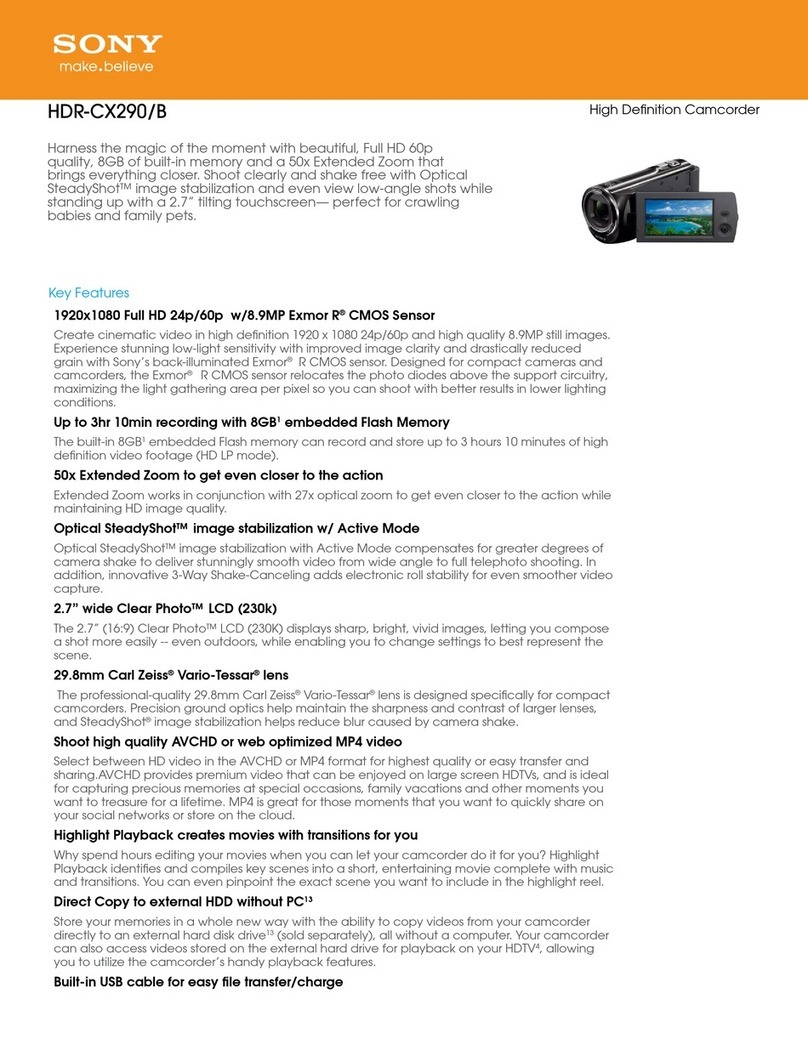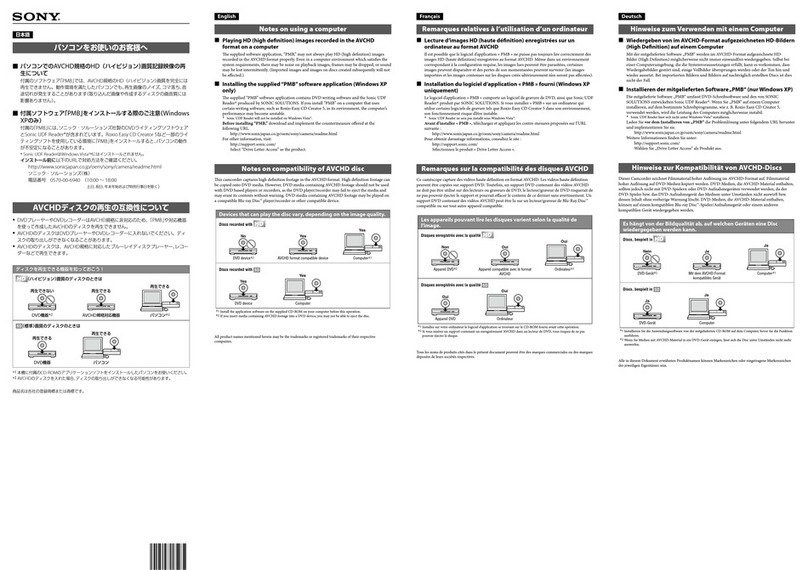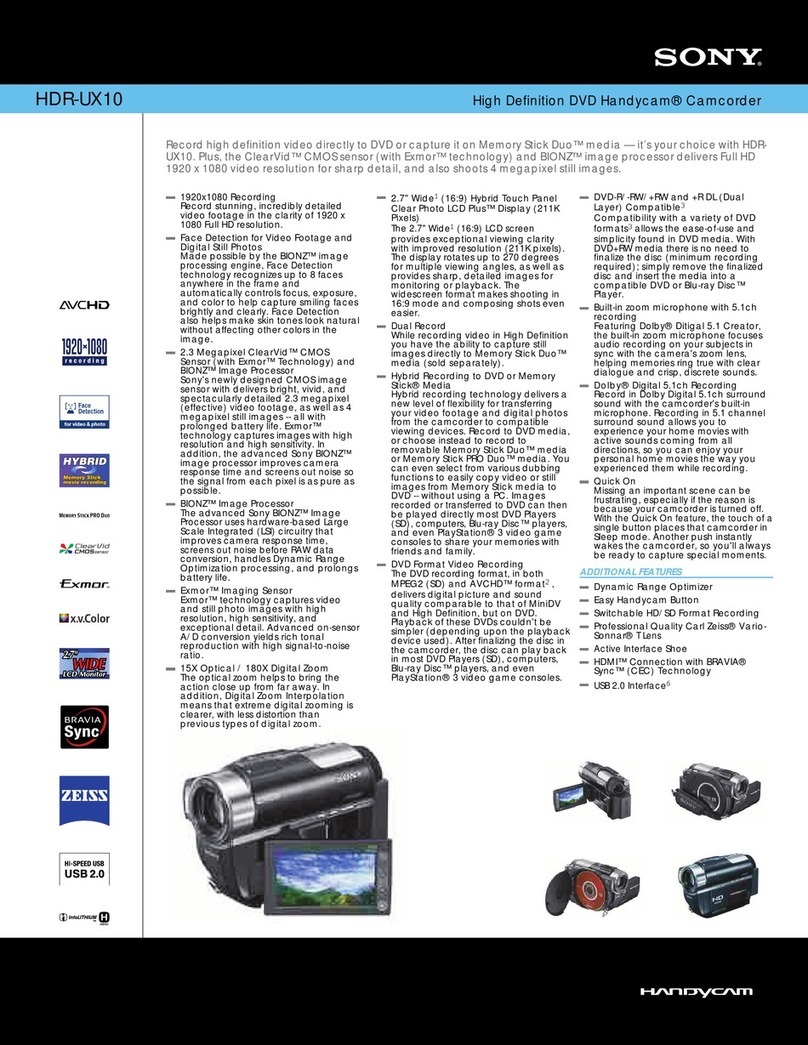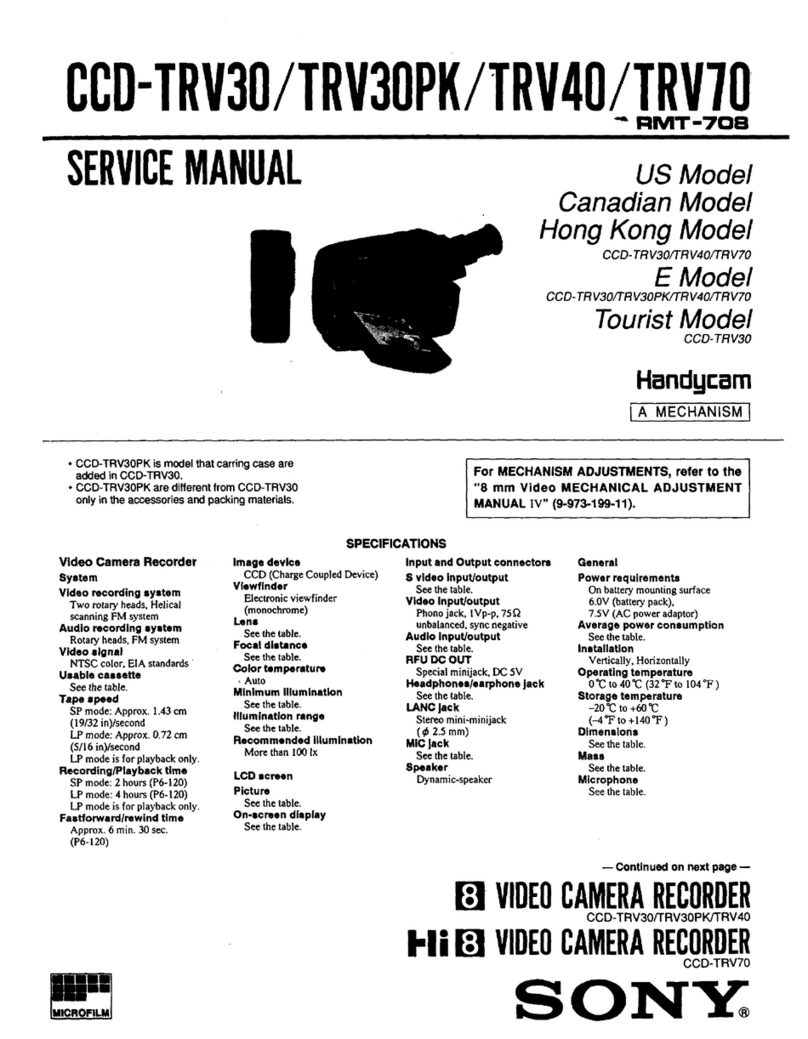
1. Overview: Name and Function of Parts
6
1. ASSIGN. (assignable) 1/2/3 switches
You can assign a function using Operation
>Assignable Switch in the setup menu
(page 120).
The ASSIGN. 1/3 switches are provided with
an indicator to show whether a function is
assigned to the switch (ON) or not (OFF).
2. ONLINE button
When network client mode or the streaming
function is assigned to this button, press and
hold until the indicator is lit orange. Then,
press the button again, turning the indicator
blue, to enable network client mode or the
streaming function.
To exit the enabled function, press and hold
the button until the indicator turns off.
The button can also be used as an assignable
switch when assigned with functions other
than those above (page 121).
3. ALARM (alarm tone volume adjustment)
knob
Controls the volume of the warning tone that
is output via the built-in speaker or optional
earphones. When the knob is turned to the
minimum position, no sound can be heard.
However, if Maintenance >Audio >Min Alarm
Volume in the setup menu is set to [Set], the
alarm tone is audible even when this volume
control is at the minimum position.
ALARM
Minimum Maximum
4. MONITOR (monitor volume adjustment)
knob
Controls the volume of the sound other than
the warning tone that is output via the built-
in speaker or earphones. When the knob is
turned to the minimum position, no sound can
be heard.
5. MONITOR (audio monitor selection)
switches
By means of combinations of the two
switches, you can select audio that you
want to hear through the built-in speaker or
earphones.
When the lower switch is set to CH-1/2
Upper switch Audio output
CH-1/CH-3 Channel 1 audio
MIX Channels 1 and 2 mixed audio
(stereo)a)
CH-2/CH-4 Channel 2 audio
When the lower switch is set to CH-3/4
Upper switch Audio output
CH-1/CH-3 Channel 3 audio
MIX Channels 3 and 4 mixed audio
(stereo)a)
CH-2/CH-4 Channel 4 audio
a) By connecting stereo headphones to the EARPHONE
jack, you can hear the audio in stereo. (Maintenance
>Audio >Headphone Out in the setup menu must be
set to Stereo.)
6. ASSIGN. (assignable) 0 switch
You can assign a function using Operation
>Assignable Switch in the setup menu
(page 120).
Off is assigned to these switches when the
camcorder is shipped from the factory.
This is a momentary type switch. Each press of
the switch turns the function assigned to this
switch on or off.
7. GAIN switch
Switches the gain of the video amplifier to
match the lighting conditions during shooting.
The gain values corresponding to the L, M, and
H settings can be selected using Operation
>Gain Switch in the setup menu (page 97)
(factory settings are L=0 dB, M=6 dB, and
H=12dB).
When this switch is adjusted, the new setting
appears on the viewfinder screen for about
three seconds.
8. OUTPUT/DCC (output signal/dynamic
contrast control) switch
Switches the video signal output from the
camera module, between the following two.
BARS: Output the color bar signal.
CAM: Output the video signal being shot.
When this is selected, you can switch DCC1)
on and off.
1) DCC (Dynamic Contrast Control): Against a very
bright background with the iris opening adjusted
to the subject, objects in the background will be
lost in the glare. The DCC function will suppress the
high intensity and restore much of the lost detail. It
is particularly effective for shooting in the following
cases.
Shooting people in the shade on a sunny day
Shooting a subject indoors, against a background
through a window
Any high contrast scene
9. WHITE BAL (white balance memory)
switch
Controls adjustment of the white balance.
PRST: Adjust the color temperature to the
preset value (the factory default setting:
3200K). Use this setting when you have no
time to adjust the white balance.
A or B: Recall the white balance adjustment
settings already stored in A or B. Push the
AUTO W/B BAL switch (page 5) to the
WHITE position to automatically adjust the
white balance and save the adjustment
settings in memory A or memory B.
B (ATW1)):When this switch is set to B and
Operation >White Setting >White Switch
<B> is set to [ATW] in the setup menu, ATW
is activated.
You can use the AUTO W/B BAL switch
even when ATW is in use.
When this switch is adjusted, the new
setting appears on the viewfinder screen
for about three seconds.
1) ATW (Auto Tracing White balance): The white balance
of the picture being shot is adjusted automatically for
varying lighting conditions.
[Note]
It may not be possible to adjust to the appropriate
colors using ATW, depending on the lighting and subject
conditions.
Examples:
When a single color dominates the subject, such as
sky, sea, ground, or flowers.
When the subject is under a light source of extremely
high or extremely low color temperature.
If execution of automatic tracing by the ATW
function takes an unacceptably long time
or only results in an inadequate effect, then
execute the AWB function.
10. Switch cover
Open this cover to use the MENU ON/OFF
switch or the MENU CANCEL/PRST/ESCAPE
switch.
11. MENU ON/OFF switch
To use the switch, open the cover.
This switch is used to display the menu on the
viewfinder screen or the test signal screen.
Each time the switch is pushed down, the
menu screen is turned on and off.
The function of this switch is the same as that
of the MENU button in the thumbnail screen
operations section.
[Note]
It is not possible to turn off the menu screen by closing
the cover.
12. MENU CANCEL/PRST (preset) /ESCAPE
switch
To use the switch, open the cover.
This switch has different functions depending
on whether or not a menu is displayed.
Use the switch in the following way when the
menu is displayed.
CANCEL/PRST: Pushing this switch up to this
position after a setting is changed in the
setup menu displays the message to
confirm whether the previous settings



















































